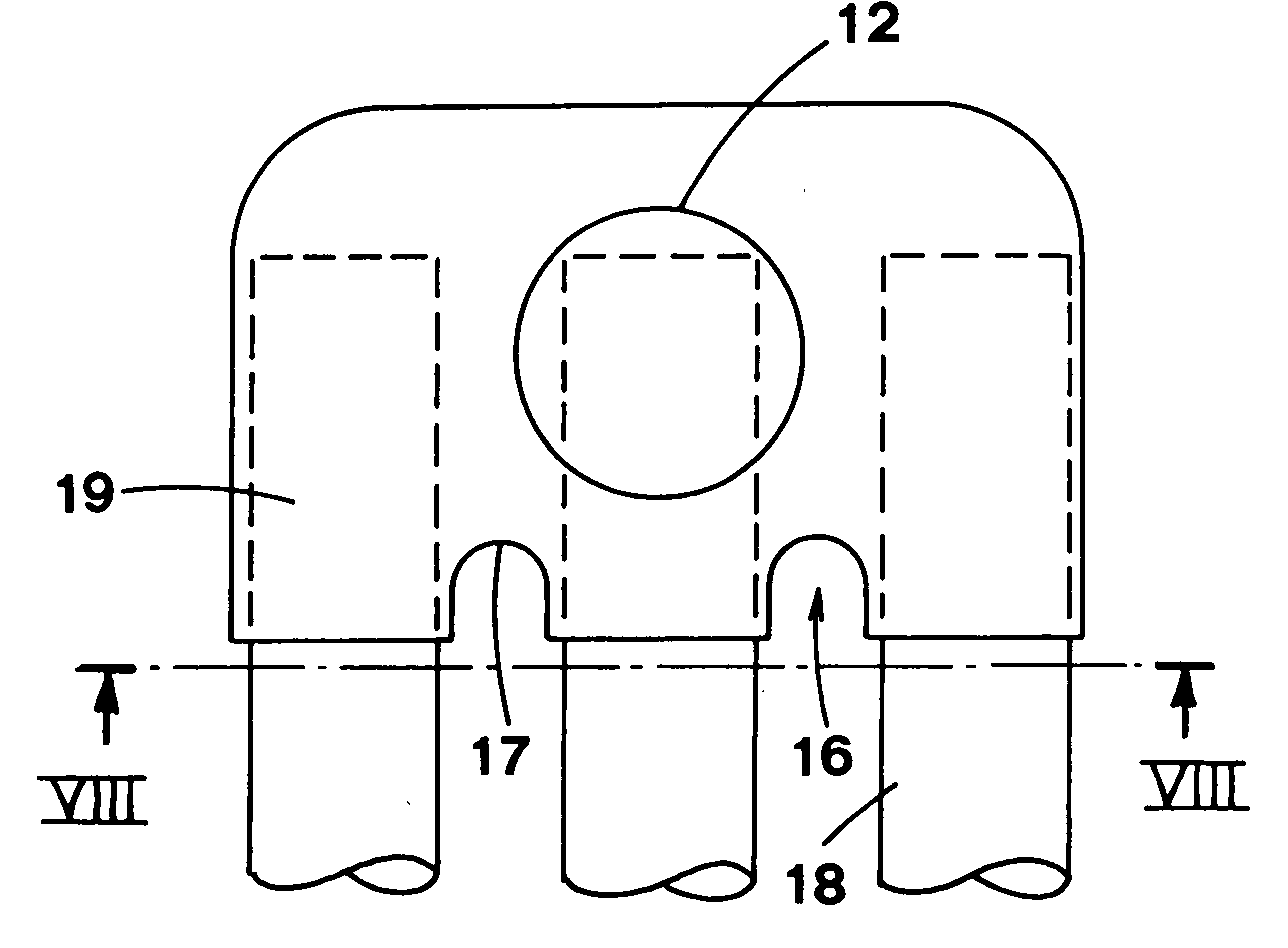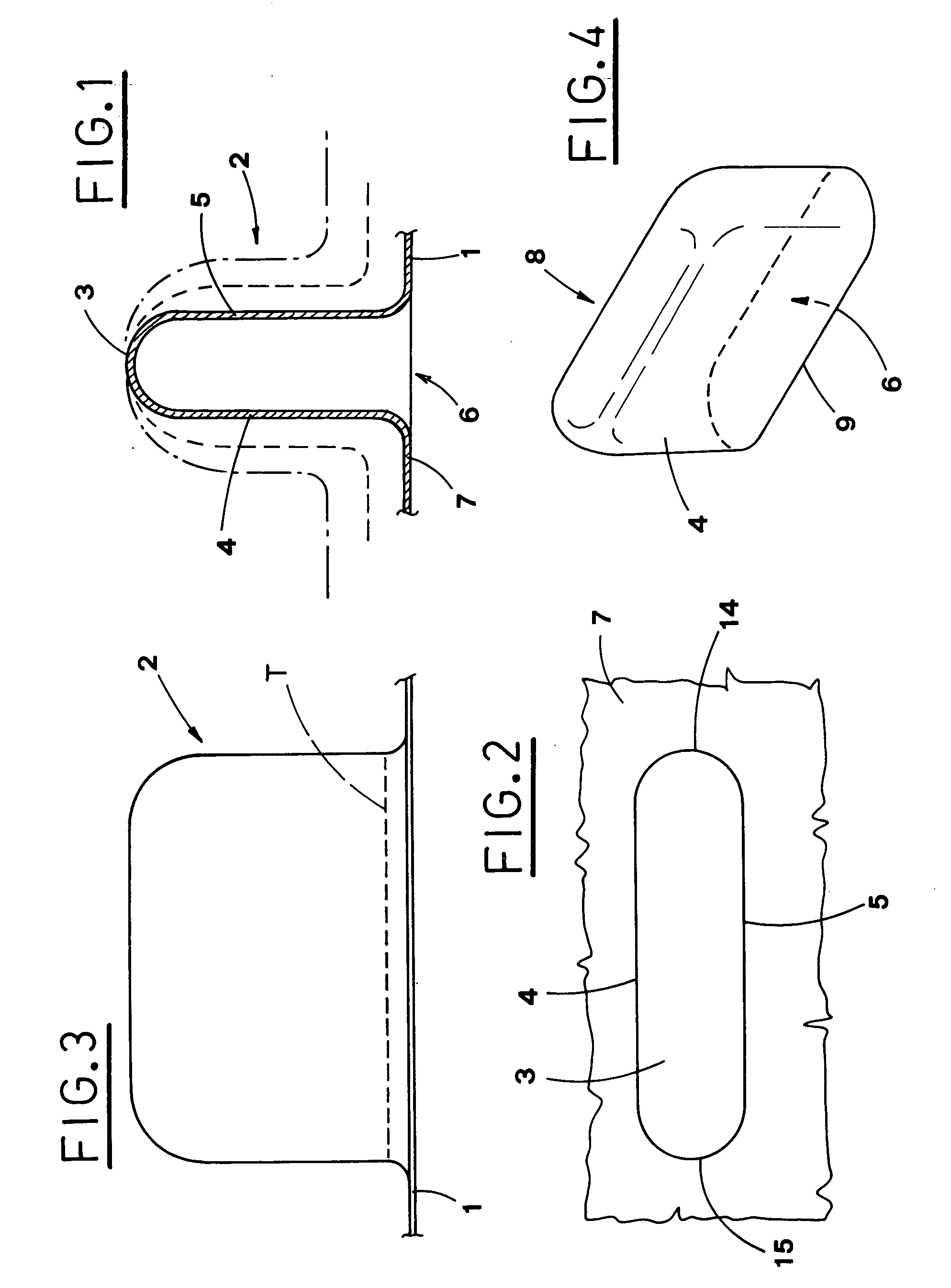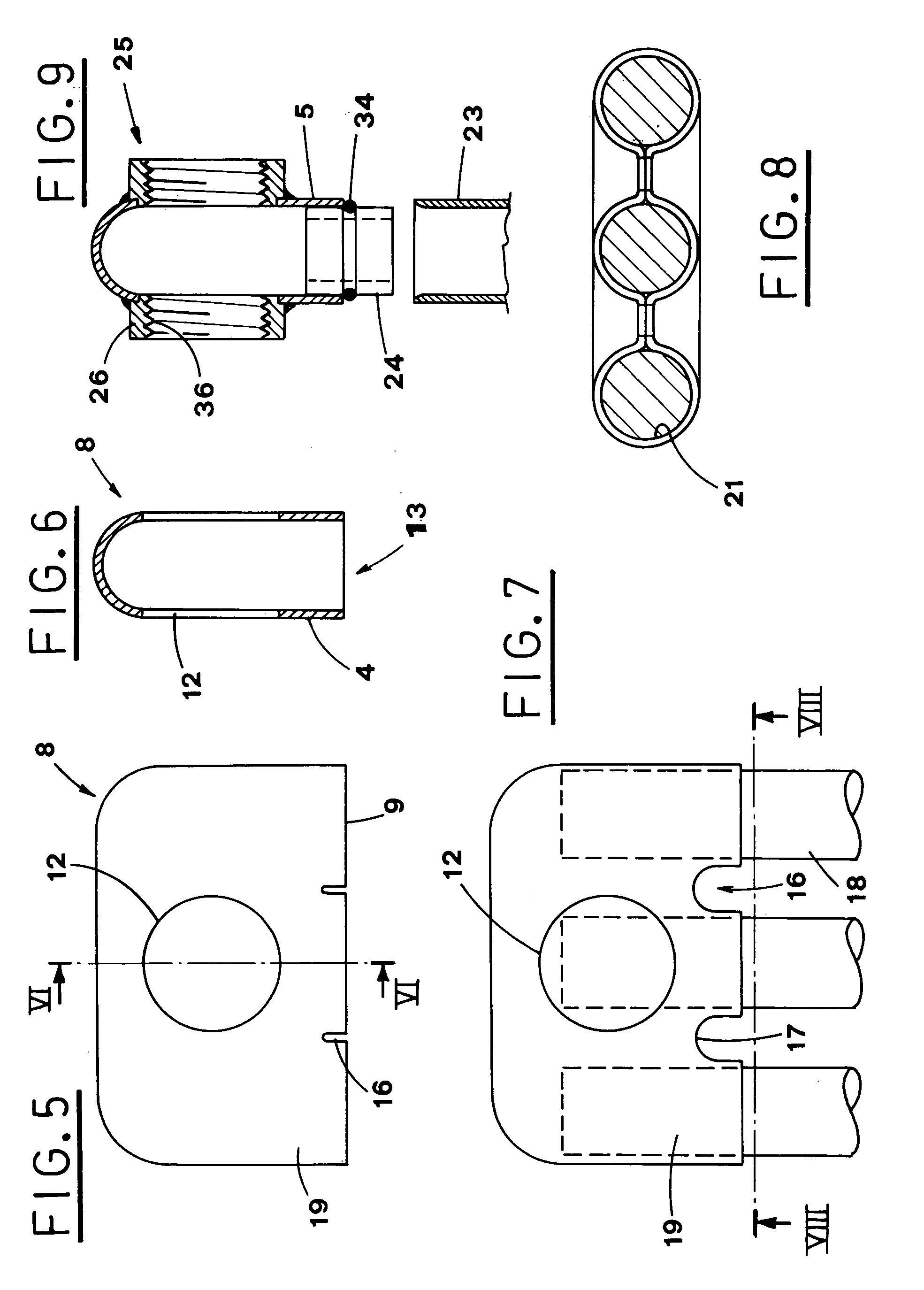Method for producing a head element for heaters
a head element and heater technology, applied in the direction of manufacturing tools, indirect heat exchangers, light and heating apparatus, etc., can solve the problems of increasing the number of working steps and production costs, difficult to make the flow of fusion material in the dies appropriate, and difficult to be treated by fusion, so as to reduce the time and cost of head element production
- Summary
- Abstract
- Description
- Claims
- Application Information
AI Technical Summary
Benefits of technology
Problems solved by technology
Method used
Image
Examples
first embodiment
[0080] shown in FIG. 9, the fastening means 25 on each lateral through aperture 12 are obtained by welding a threaded ring 26 around the lateral through aperture 12.
[0081] A threaded joint (not shown) is then screwed into the inner threading 36 of the ring 26 during the heater assembly.
[0082] According to another embodiment of the fastening means 25, shown in Figures from 11 to 15, a circular crown 27, extending around each lateral through aperture 12, is obtained by applying a pressure directed outwards, thus deforming plastically the hollow body 8 and forming a protruding edge 31.
[0083] The protruding edge 31 is obtained by introducing a flat core 28 into the hollow body 8 through the open side 6, before the holes 13 are made (FIG. 11).
[0084] The flat core 28 is equipped with a floating element 29, which is situated in a position matching each lateral through aperture 12 and is pushed outwards alternately in opposite directions, thus forming the protruding edge 31 on the circular...
second embodiment
[0117] the fastening means 25 on each lateral through aperture 12 are obtained by a circular crown 27 surrounding the lateral through aperture 12, which has been plastically deformed by pressing outwards, so as to form a protruding edge 31.
[0118] A threaded ring 38 is introduced into the seat defined by the protruding edge 31 and fixed therein either by welding spot or by slight deformations made in the material of the head. Any other means can be used to fix the threaded ring and avoid rotation thereof.
[0119] Otherwise, the circular crown 27 is left free to be fastened to an adjacent head element by welding.
[0120] Consequently, the objects listed in the introduction have been obtained by the method for producing head elements and the head element described above.
[0121] The head element is produced in a single body, by more pressing steps, without the drawbacks resulting from the fusion procedure and without the necessity to weld two semi-shells to each other, or other elements of ...
PUM
| Property | Measurement | Unit |
|---|---|---|
| area | aaaaa | aaaaa |
| circumference | aaaaa | aaaaa |
| diameter | aaaaa | aaaaa |
Abstract
Description
Claims
Application Information
 Login to View More
Login to View More - R&D
- Intellectual Property
- Life Sciences
- Materials
- Tech Scout
- Unparalleled Data Quality
- Higher Quality Content
- 60% Fewer Hallucinations
Browse by: Latest US Patents, China's latest patents, Technical Efficacy Thesaurus, Application Domain, Technology Topic, Popular Technical Reports.
© 2025 PatSnap. All rights reserved.Legal|Privacy policy|Modern Slavery Act Transparency Statement|Sitemap|About US| Contact US: help@patsnap.com



